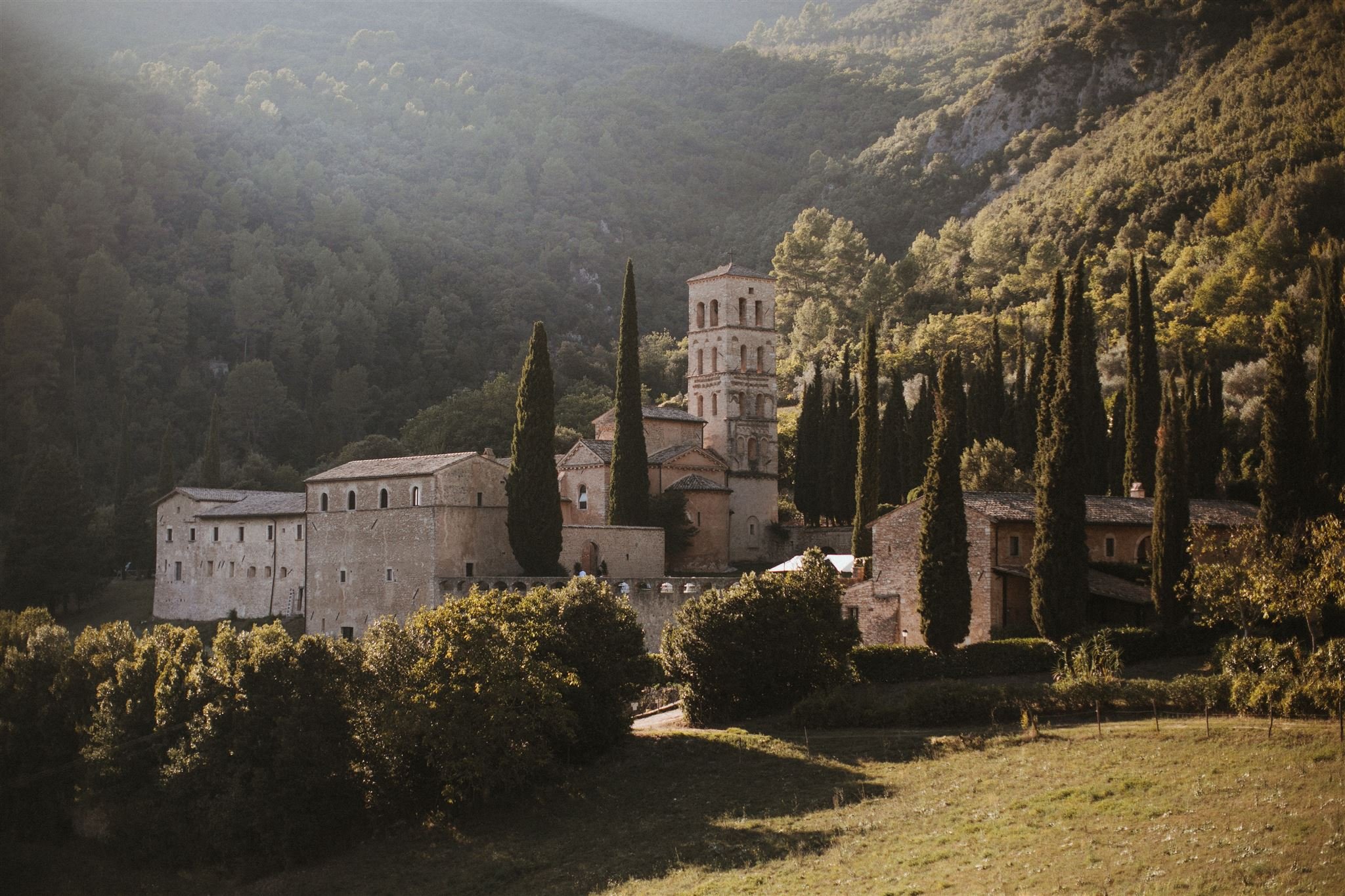
Abbazia San Pietro in Valle:
A Historic Gem of Umbria
Origins in the Early Middle Ages
The Abbey of San Pietro in Valle was founded in the 8th century by Duke Faroaldo II of Spoleto, who is said to have built it after renouncing his title to become a monk. The abbey was strategically located in the lush Valnerina valley, nestled within the Umbrian Apennines, offering both spiritual seclusion and protection. According to legend, Faroaldo chose the site to honor the tombs of two Syrian hermits—Lazzaro and Giovanni—who had lived and preached in the area during the 6th century.
Lombard Influence
The abbey is one of the finest surviving examples of Lombard-Romanesque architecture in Italy. It quickly became a religious and cultural hub under Lombard patronage and was richly endowed by local dukes and noble families. Many of the abbey's early frescoes, sculptures, and architectural details reflect this heritage.
Medieval Flourishing
During the 11th to 13th centuries, the abbey flourished as a Benedictine monastery. It amassed land, power, and influence, playing a key role in the religious and political life of the region. The interior of the abbey church is famous for its 8th-century sarcophagi, Roman spolia, and a stunning cycle of frescoes from the 13th century, which depict biblical scenes with a unique fusion of Byzantine and Western styles.
Decline and Revival
The abbey’s fortunes waned in the later Middle Ages due to political upheaval and changes in ecclesiastical power. In the 15th and 16th centuries, it passed into the hands of various commendatory abbots, which led to its gradual decline. However, its artistic and historical significance was recognized in later centuries, leading to restoration efforts.
Modern Era
Today, Abbazia San Pietro in Valle is a protected historical site and has been partially restored for use as both a cultural heritage monument and a luxury hospitality venue. Visitors can explore the serene cloisters, ancient tombs, and atmospheric church, offering a rare glimpse into early medieval monastic life.